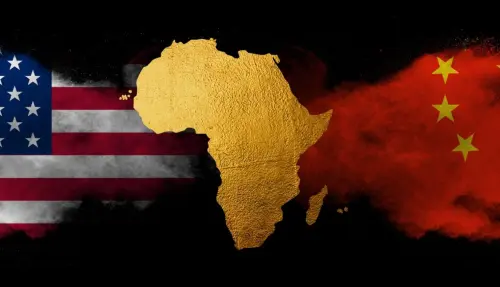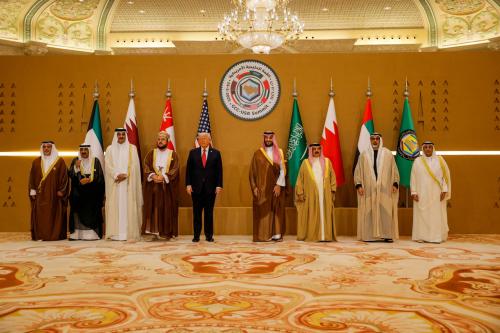The first decade of the 21st century was dominated by terror and terrorists. No one man was responsible although the pre-eminent face was that of Osama bin Laden. The global jihad of terror struck from New York to New Delhi. The centre of the storm was South Asia, and the epicenter of the storm Pakistan. India was often ground zero.
The terrorists started the decade with an attack right on the eve of the millennium. Terrorists from the Pakistan-based group Harkat-ul Mujahideen hijacked an Indian airliner en route to New Delhi from Kathmandu, finally taking it to Kandahar in Taliban-controlled Afghanistan. One hostage was murdered. Former foreign minister Jaswant Singh has rightly described the operation as a forerunner for the 9/11 plot because it involved the same cast of characters brewing the stew; Pakistan-based terrorists, al Qaeda, the Afghan Taliban and the ISI. Originally the hijacking was to be part of a larger al Qaeda-orchestrated millennium plot to include attacks in Los Angeles, Amman and Aden but only the Indian plot got off the ground. The plotters had intended that the plane explode exactly on the stroke of the millennium but Singh negotiated the release of the hostages before more lives were lost.
The whole world changed dramatically on September 11, 2001, when al Qaeda hijacked four airplanes and attacked the World Trade Center, the Pentagon and tried to strike the U.S. Capitol. Masterminded by a Pakistani, Khaled Shaykh Muhammad, and Bin Laden, 9/11 would lead to two wars, the collapse of the Taliban’s Islamic Emirate of Afghanistan and a global war on terror.
Briefly, the terrorists were on the run. They were caught off-guard by the agile American intervention in Afghanistan. They had underestimated how unpopular the Taliban had become with most Afghans and they overestimated the loyalty of President Pervez Musharraf to the Taliban cause. For a time Pakistan turned on its Afghan Taliban ally, withdrawing support, including expert troops, oil and volunteers. The Northern Alliance raced into Kabul and Bin Laden and his gang seemed to be cornered.
But the terrorists were saved. First, the American hammer that should have hunted them relentlessly never materialized. President George Bush was obsessed with Iraq, even though not a shred of evidence linked Saddam Hussein to the 9/11 plot, and sent the best and brightest of America’s spies and generals to prepare to invade Iraq.
Second, the terrorists struck at the Indian Parliament on December 13, 2001. The attack was a joint operation of two Pakistan-based groups with close links to al Qaeda, Lashkar-e-Toiba and Jaish-e-Muhammad. They hoped to kill Prime Minister Vajpayee and opposition leader Sonia Gandhi, perhaps sparking war. India blamed Pakistan for harboring the terrorists’ leaders and providing them support. It mobilized and Pakistan followed suit. Thus the Pakistani anvil which should have been along the Durand line to capture fleeing al Qaeda terrorists never materialized either. Who benefited from the attack on Parliament the most? The terrorists who exploited the confrontation to find room to hide and operate in Pakistan were the big winners. This November, al Qaeda’s new leader Ayman Zawahiri publicly credited the American mistakes in late 2001 with saving Bin Laden and al Qaeda, allowing it to survive for another decade.
In the years after 2001, al Qaeda and its affiliates would strike around the globe. Australians were targeted in Bali, Israelis in Mombasa, Spaniards in Madrid, Moroccans in Casablanca and others around the world. Many, if not most, of the attacks had links back to Pakistan. The July 7, 2005 attack in London, for example, was carried out by British jihadists who were trained in Pakistan and connected to al Qaeda. Their martyrdom videos were played on al Qaeda’s propaganda tapes with Bin Laden’s deputy, Zawahiri, providing commentary.
Bin Laden wandered around Afghanistan and Pakistan for five years. On the eve of the American presidential election in 2004 he appeared in a video message warning Americans that more attacks were inevitable. Then in 2006 he moved into a carefully constructed hideout in the cantonment city of Abbottabad, only some 30 miles from Islamabad. His compound was less than a mile from the Kakul Military Academy. For the next five years, bin Laden would run al Qaeda’s global operations from the front yard of the Pakistani army.
By 2006, the two wars in Iraq and Afghanistan had turned into quagmires. Al Qaeda had sent jihadists from across the Arab world to Iraq, blew up the United Nations headquarters in Baghdad and turned the country to civil war between Shias and Sunnis. In Afghanistan, the ISI had resumed support for the Taliban, providing sanctuary for its leaders in Quetta and bases all along the frontier for fighters. New tactics were imported by al Qaeda, such as suicide bombings, to help the Taliban. The war that should have been an easy victory in 2002 was heading for catastrophe in 2006. Bush chose to double his bets on Iraq with a surge, leaving Afghanistan to deteriorate further.
Disaster was averted in August 2006 when al Qaeda’s most elaborate and deadly plot since 9/11 was thwarted by MI5 and MI6, the British security services. More than a dozen British citizens of Pakistani origin were trained by al Qaeda to mix deadly explosives together on aircraft en route from Heathrow to a half a dozen airports in Canada and the United States, blowing them up simultaneously over the north Atlantic Ocean. The plot was intended to mark the fifth anniversary of 9/11 with mass murder in the skies, leading to the collapse of the global airline business and the global economy. Bin Laden followed the plan from his Abbottabad lair, the Birminghamborn plot mastermind Rashid Rauf, a British-Pakistani citizen, was briefly arrested in Bahawalpur, Pakistan, but ‘escaped’ prison a year later.
Terror struck home in Pakistan itself in 2007. Former Prime Minister Benazir Bhutto, who had authored a stinging critique of the jihadist narrative, came home after years in exile only to be the target of a bomb attack as she drove from the airport to a rally in Karachi in October. Two months later, the terrorists finished the job and killed her in Rawalpindi. Al Qaeda claimed credit for the assassination. Pakistani police washed down the murder scene before forensic evidence could be collected. Pervez Musharraf’s government finally collapsed.
The worst terror attack of the decade save 9/11 came less than a year after Benazir’s assassination. 26/11, the attack by 10 Lashkar-e-Taiba terrorists on the city of Mumbai was not the first or most deadly attack on India’s financial capital. It had been targeted by terror before, most notably in 1993 and 2006. But this time the terror lasted for four days. The world watched the terror live on television. The targets were the targets of the global jihad— Indians, Americans and other westerners and Jews and Israelis. The plot had been preceded by years of careful reconnaissance and preparation. An American of Pakistani descent, David Headley, had carefully prepared the way for the LeT hitmen by visiting the city five times before they attacked and reporting detailed assessments of the target to LeT’s leaders in Lahore and Karachi.
Headley was also working for al Qaeda and the ISI. He confessed all to an American court after being arrested en route to another planned terror attack in Copenhagen, Denmark. This plot was intended to take place during the global climate change summit with leaders from all over the world in attendance.
Terror returned to North America on Christmas day 2009. A Nigerian jihadist tried to blow up an airliner en route to Detroit from Amsterdam as it descended over Ontario. Alert passengers thwarted the attack. Bin Laden claimed credit in a message taped in Abbottabad, promising more attacks as long as America supports Israel. Other al Qaeda plots to blow up the New York City metro and cargo jets over Chicago were thwarted. A Pakistani set a car bomb in Times Square but the bomb misfired and an alert hot dog vendor alerted the police. President Barack Obama and all Americans were lucky.
Bin Laden’s luck finally ran out on May 2, 2011. The most wanted man in human history was finally found by the CIA in late 2010. Obama wisely decided that the Pakistani army and ISI could not be trusted with the information and instead sent in commandos to do the job. Pakistanis were stunned. Many assumed the ISI must have been complicit in hiding bin Laden but the army claimed it was clueless. Phone numbers found in the compound showed the fugitive was in contact with Harkat-ul Mujahideen, the hijackers who started the decade of terror. Its leaders live openly in Islamabad, courted by ISI.
It would be tempting to hope the death of ‘high value target number one’ will mark the end of the terrorists’ jihad. But bin Laden was openly mourned by LeT’s Hafiz Saeed and the Afghan Taliban’s Mullah Omar. Both remain alive and active in Lahore and Quetta. Pakistan remains home to more terrorists than any other country in the world, most targeting India and its interests.
In March 2000, after visiting India, President Bill Clinton spent a day in Islamabad. He warned Musharraf that terror would consume Pakistan if it did not stop harboring so many terrorists. A decade later, 35,000 Pakistanis, including Bhutto, have died from the terrorists. But the terrorist infrastructure remains intact and the army is both negligent and complicit in its survival.
The terrorists have many goals and many agendas but one of their objectives is to bait India into war with Pakistan. That was one target of the Parliament attack in 2001 and of the Mumbai murders in 2008. Two Indian Prime Ministers have been too smart to fall for the bait. Atal Bihari Vajpayee and Manmohan Singh wisely decided that war was a trap, not a solution for terrorism. India will need to remain vigilant, the terrorists’ decade is over but they are still deadly.
The Brookings Institution is committed to quality, independence, and impact.
We are supported by a diverse array of funders. In line with our values and policies, each Brookings publication represents the sole views of its author(s).



Commentary
The Grave New World: Terrorism in the 21st Century
December 9, 2011